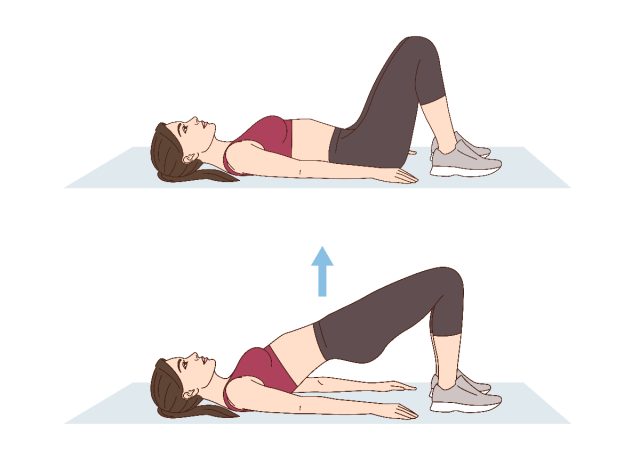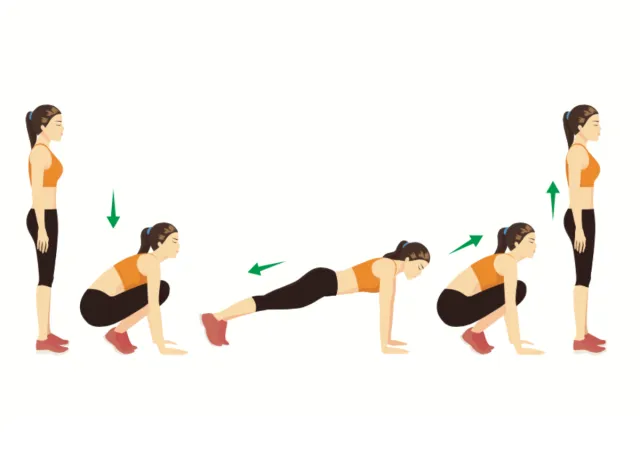Growing older means experiencing the aftermath—aka the “wear and tear”—of various exercises, sports, and other physical activities you’ve performed throughout your life. One main body part that really takes a hit is your back—especially if you haven’t been moving in an efficient manner, says CarolAnn, NCPT, CPT, MS, exercise science and health promotion, lead instructor/master trainer of Club Pilates in Athens, GA. As a matter of fact, according to Signe Spine & Rehab, LLC, pain in the lower back is one of the most typical ailments among the older adult population. The good news is, you can make some simple yet effective tweaks to your workouts to help relieve and improve your back issues. We’re here today with six exercises that destroy your back after 50 so you know exactly what to avoid, along with what to do instead.
“One of the biggest issues I hear from my clients when they come in for their first class at Club Pilates is that they have pain in their back or limited mobility with workouts that require flexion or effort from the back area,” CarolAnn tells us. “Some exercises that you have performed in the past may not have given you any back issues because your younger body has been able to ‘get away’ with the biomechanics of that movement, but now that you have a more mature body, these same exercises may potentially be harmful to your back!”
The below exercises are pretty common and not necessarily “wrong,” CarolAnn explains, but if you do them incorrectly, you may suffer from back issues down the road. During your workouts, it’s crucial to focus on the main muscles that offer support to your back, including your abdominals, hamstrings, and glutes. Below are six exercises that destroy your back after 50, in addition to what you can do instead to safely sculpt a stronger core that’ll support your back.
Read on to learn more, and next, don’t miss 5 Exercise Habits That Are Destroying Your Body After 50.
1. Partner Lying Leg Raise with Leg Throwdowns
The partner lying leg raise with leg throwdowns requires a workout buddy. The goal of this exercise is to build stronger abs. It’s performed with one individual lying flat on their back, and their partner standing by their head. The person who’s lying on the floor holds onto the ankles of the partner who’s standing tall. Then, the standing individual pushes their partner’s legs forward and back down. The individual who’s lying on the floor makes sure their legs don’t touch the ground when their legs are pushed down.
If you’re wondering how this move is detrimental to your back, CarolAnn says, “It is very easy for one to compensate with the back because of the force and momentum of the legs. When not performed correctly, the back tends to arch off the floor creating undo stress. Over time this improper movement will cause back issues.”
What to do instead: Leg Lower Lifts
CarolAnn recommends performing the leg lower lift instead, which can be completed on a workout mat or a Pilates reformer. She tells us, “This exercise is much more controlled, enabling one to remain in neutral pelvis (or spine) which is much healthier for the spine and back muscles.”
You’ll lie flat on your back with both legs extended toward the sky. Your shoulders and chest should be raised to assume a “crunch” position, with both hands offering support to your head. In a slow, controlled motion, lower your legs toward the ground while keeping your pelvis neutral. Then, bring your legs back up to the starting position.
2. RDL (Romanian Deadlift)
The Romanian deadlift calls for you to hold a loaded barbell, hinge your hips back to lower the barbell below your knees, then bring the barbell back up to standing. It’s meant to help you achieve stronger glutes, hamstrings, and lower back.
The RDL is unfortunately a risky exercise for your back because more often than not, individuals will exaggeratedly round the upper back rather than keep it flat. They also won’t activate the core and will use their lower back to initiate the lift. “This improper movement compresses the vertebral discs,” CarolAnn explains.
What to do instead: Bridges


Ditch the Romanian deadlift for bridges (spinal flexion). “This exercise is an excellent safe alternative that strengthens the glutes and hamstrings while enhancing core stability,” CarolAnn points out.
To start bridges, you’ll lie flat on your back, keeping both arms by your sides with your palms facing the floor. Bend your knees to form 90-degree angles, and position your feet hip-width distance apart. “Curl the pelvis and articulate the spine off the floor one vertebra at a time lifting the hips up,” CarolAnn continues to instruct. “Press your heels into the floor as you hold the bridge. Your body should form a straight line from shoulders to knees. Then, return the hips to the floor in reverse articulating the spine down one vertebra at a time. This exercise can also be performed on the Reformer in Club Pilates classes with the feet on the foot bar.”
READ RELATED: Wired Headphones Are Back, Baby! Here Are 7 Excellent Pairs to Buy Now
3. Standing Side Bend with Weights
This standing ab exercise requires you to stand up tall, hold a dumbbell in one hand, and bend your torso sideways so that the free weight travels from your hip to your knee, then comes back up. The goal here is to strengthen your waist and obliques.
CarolAnn says this move can be risky because “it highlights the very unstable lumbar-pelvic area, and it can lead to exacerbated back pain or sharp pains in the lower back and can also increase spinal disc degeneration. If the wrong weight is chosen, it could contribute to imbalances in the body and even back pain. This side bend creates a strain on the lateral spinal joints, spinal discs, psoas muscle, and lumbodorsal fascia.”
What to do instead: The Mermaid


Swap out the standing side bend for the mermaid (spinal lateral flexion). You can complete this exercise on a workout mat or a Pilates reformer to lengthen your spine, boost your hip mobility, and build stronger obliques.
You’ll begin by sitting on the ground with your legs “folded” to the right side of your body. Put your left hand down on the ground next to your hips, and extend the other arm up beside your ear. Bend over to your left side while reaching your right arm over your body toward the left. Return to the starting position before bending over to the opposite side. Complete this exercise three times on one side, then move your legs to the opposite side to perform three reps.
4. Alternating Toe Touches
The alternating toe touch aims to stretch your back and hamstrings. This exercise can be dangerous because chronic tightness of the hamstrings can result in lower back pain. It’s quite common to excessively round your back, which adds pressure to your spine. “As one gets older, the muscles get inherently tighter, and that’s compounded when one sits for much of the day. The tighter those muscles, the more rounding one will have to do to touch the toes,” CarolAnn explains.
What to do instead: The Saw
Instead of alternating toe touches, CarolAnn recommends the saw (spinal rotation and flexion). You’ll begin by sitting on the ground with your legs out straight and around three feet apart from each other. Your arms should be out straight to the side. Turn your body to one side as you bend forward, bringing your opposite hand to your opposite foot. Head back to the middle, and perform the same motion on your other side.
5. Good Morning Exercise
The goal of this exercise is to enhance the strength of your glutes, hamstrings, and core by hinging your hips forward and back while standing and holding a weight plate by your chest or a barbell resting on your upper back. It’s risky because “there is extreme shear force that is placed on the discs, ligaments, and fascia which is not healthy for the back,” CarolAnn says. She adds, “Insufficient upper body mobility and/or a lack of scapular stability can cause the bar to roll forward onto the neck, which not only increases shear force but also puts the shoulders into a potentially troublesome position of extreme external rotation and abduction.”
What to do instead: Back Extension
Instead of the good morning exercise, CarolAnn suggests trying back extensions. This move will safely activate your spinal extensors without putting strain on your back. You’ll set up for it by lying face-down on a workout mat and extending your arms by the sides of your body. Then, raise both legs and your chest up from the mat before lowering them back down in a controlled manner.
6. Burpees


The last of CarolAnn’s exercises that destroy your back after 50 is the burpee. This exercise is a full-body conditioning move with a cardio aspect. Burpees call for you to descend into a pushup and then explosively jump up. The high-impact nature of this exercise, which targets a good portion of upper and lower-body muscles, can increase pain in individuals who are already suffering from back pain.
What to do instead: Planks with Pushups
Planks with pushups are a great alternative exercise to burpees. “This is a safer alternative to avoid the high impact that a burpee provides. To receive the benefits of cardio training without the high impact of a burpee, the jump board attachment on the reformer is great to facilitate a low-impact cardio option that is easy on the back,” CarolAnn explains.
Source:











